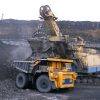The Use of Magnetic Separators in the Mining Industry
The mining industry requires some powerful machinery – draglines, excavators, and massive drill rigs. You’ve likely seen one or more these machines while driving down the highway. It is a tough line of work that employs equally tough people, but as demanding as the industry is, and as imposing as most of the machinery tends to be, it requires other, more delicate equipment as well.
Fragility in Mining
The mining process generates a lot of potentially destructive debris and foreign metal, which can damage the more sensitive equipment. For example, the industry relies heavily on conveyor belts; however, they will tear under poor conditions or misuse. Another common tool is the hammer mill – used to crush material into smaller pieces – and it may jam if not properly cared for. Invariably, mining results in tramp metal – an umbrella term for unwanted metal. This could refer to metal dust, filings, nuts, bolts, tool bits, or even broken machinery. When digging into the earth for a specific element, you are bound to encounter and potentially generate a certain amount of tramp metal that must be removed during the manufacturing process.Protecting the Industry with Magnets
A variety of magnetic tools are used to separate unwanted bits of tramp metal. Three of the most common magnetic separators used in the mining industry include:- Suspended plate magnets: Held above conveyor belts, these magnets pick up unwanted material as it passes underneath.
- Cross belt separators: Similar to suspended plate magnets, these magnets are designed to pull material away from conveyor belts. The biggest difference is their ability to self-clean. A belt wrapped around the separator moves ferrous material to the side and drops it into a receptacle.
- Magnetic drum separators: This magnet is essentially a large roller. Mixed material is passed over the drum, and ferromagnetic material is attracted and routed in a different direction.

